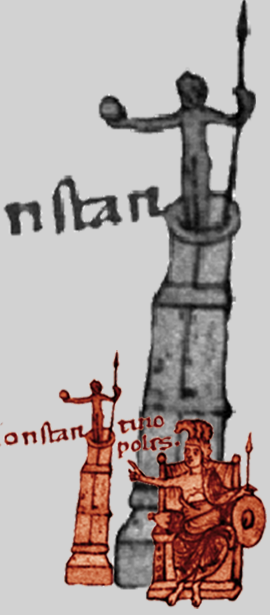Historical Geography
Historical Geography
Research on Historical Geography of the Byzantine Empire at the Austrian Academy of Sciences is conducted by the Tabula Imperii Byzantini (TIB). This project was accepted by the Union Académique Internationale in Brussels in 2015, and at the same time included into the scheme of Long-Term-Projects (2015–2027) of the Austrian Academy of Sciences, based on international evaluations. The TIB carries out systematic research in the historical geography of the Byzantine Empire, from the beginning of the fourth century to the mid-15th century. The aim of the project is to create a historical atlas of the Byzantine area from Late Antiquity to the early Modern period. Individual regions are represented on maps on a scale of 1:800,000. A separate accompanying volume presents the results of detailed research in each region. Each volume contains detailed introductory chapters on geography and climate, borders and territorial designations, history, administrative history, church history and monasticism, traffic routes, economy and demography.
The main part of each volume consists of an alphabetical catalogue of all toponyms (including hydronyms etc.) that were known in Byzantine times. Also included are the historical places whose historical names are unknown, but for whose existence there is (or there was) archaeological evidence. Written sources and archaeological materials elucidate the history of individual places, along with brief descriptions of monuments, both those that are known to have once existed and those that are still preserved.
Each volume is based on extensive research, which entails the analysis of written sources (including inscriptions, seals etc.), travel literature since the early modern period, and published reports of surveys and of excavations. This is augmented by systematic travel in the field in order to verify, modify or complete the information of the sources.
On the basis of this method, twelve volumes have been published since 1976, seven more volumes are in preparation, and additional volumes are planned according to the scheme of long-term-projects of the Austrian Academy of Sciences (see the attached map).
Since the late 1990s, new methods have been added: studies of paleo-climate and settlement theories (for example a modified “Central Place Theory”), as well as the regular use of the “Global Positioning System” (GPS) during field missions and surveys. Digital Humanities in the form of Historical Geographical Information Systems (HGIS) contribute to the analysis and interpretation of the research data. Strong interactions exist with the project Complexities and Networks.

